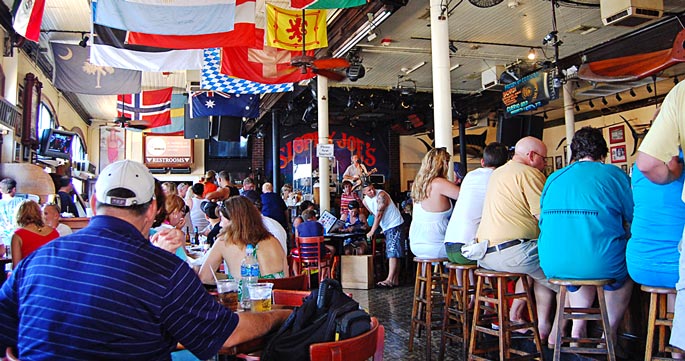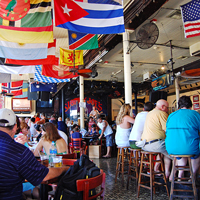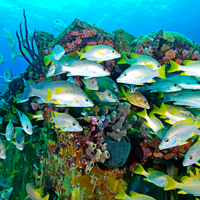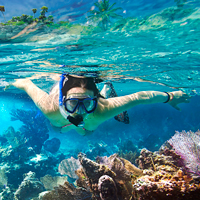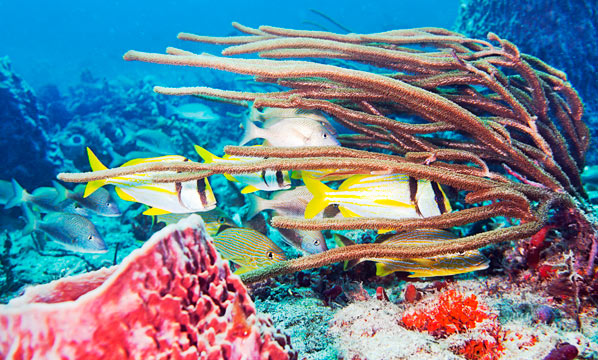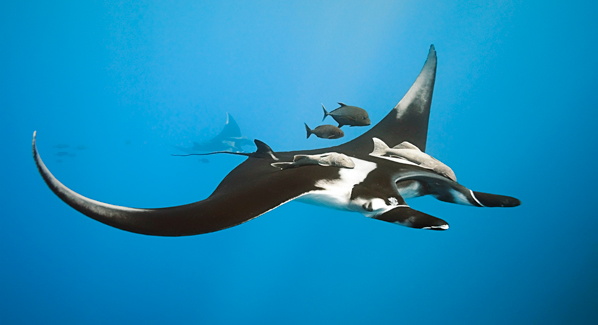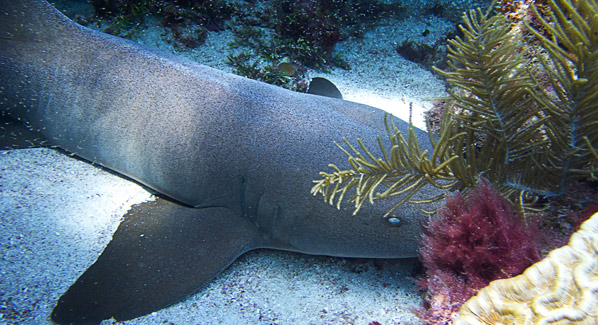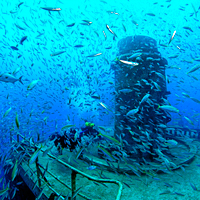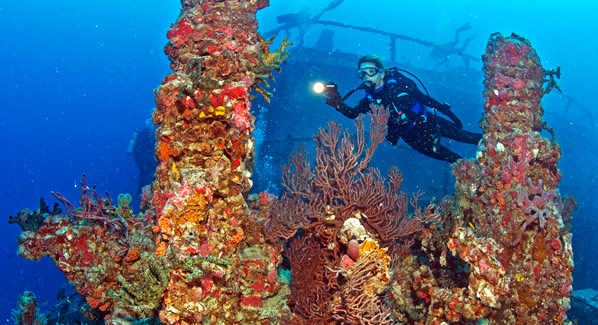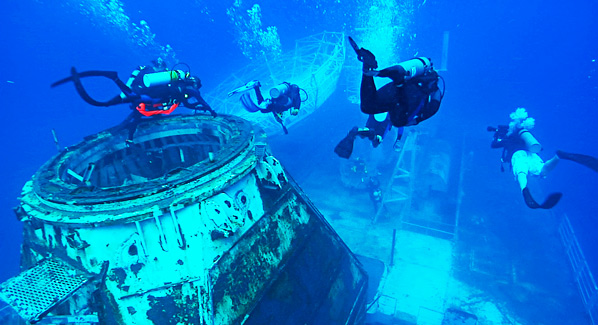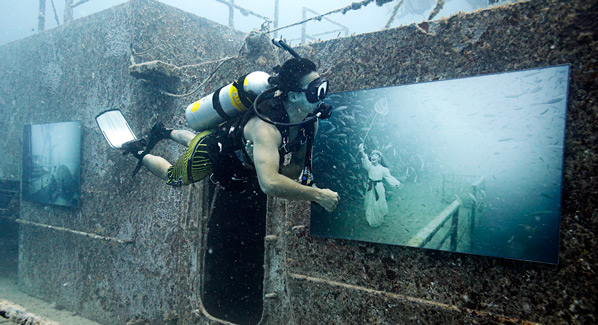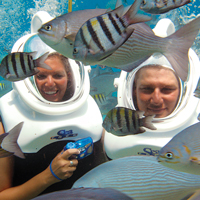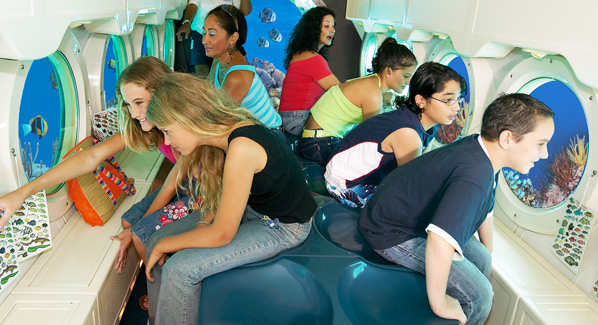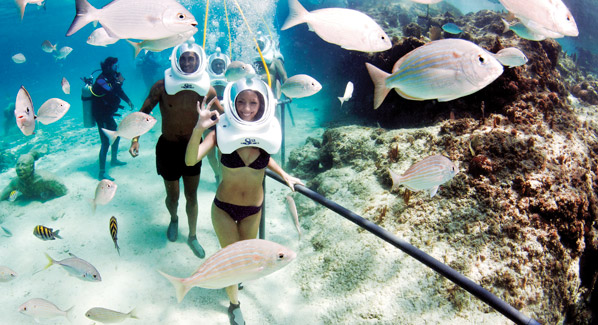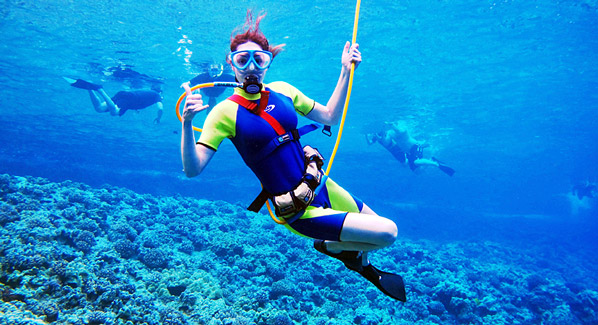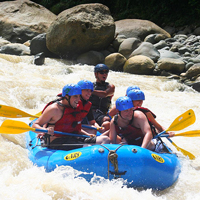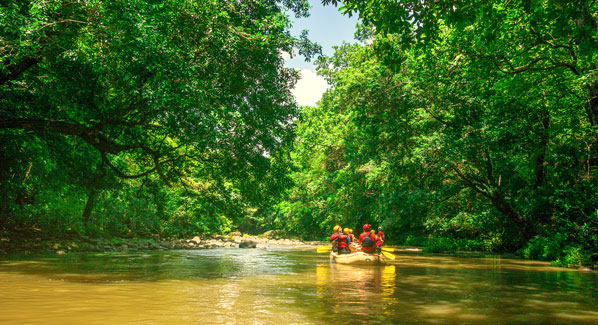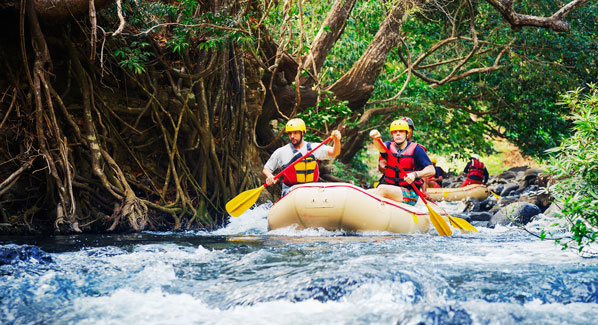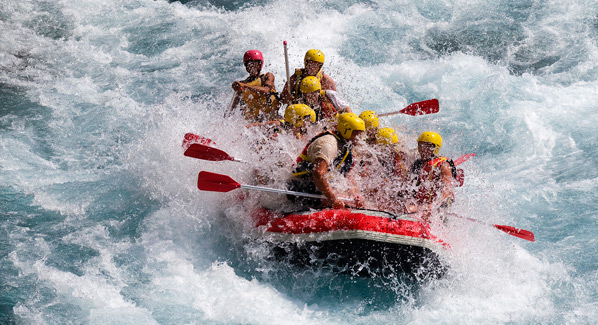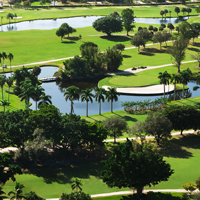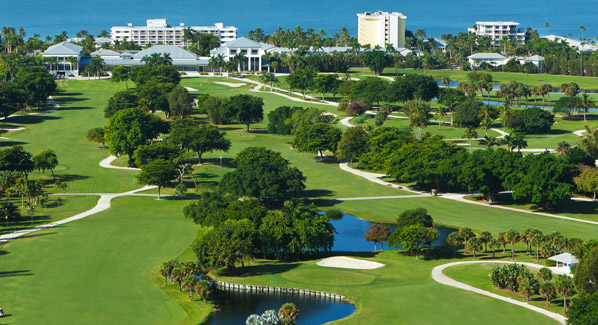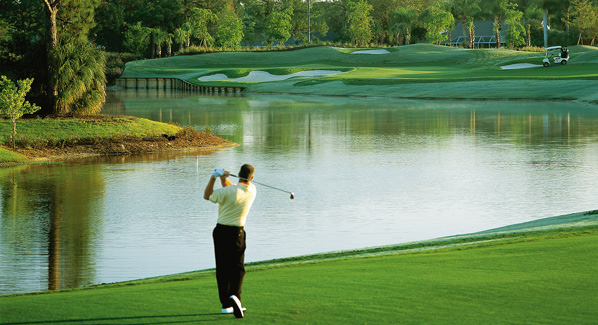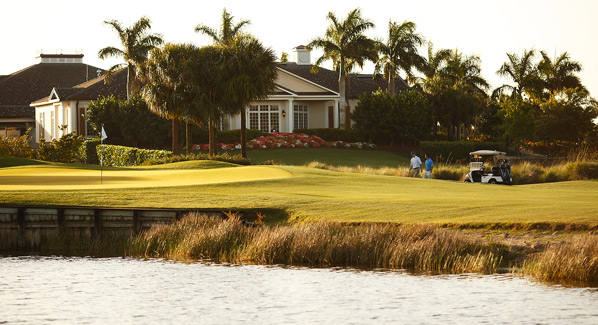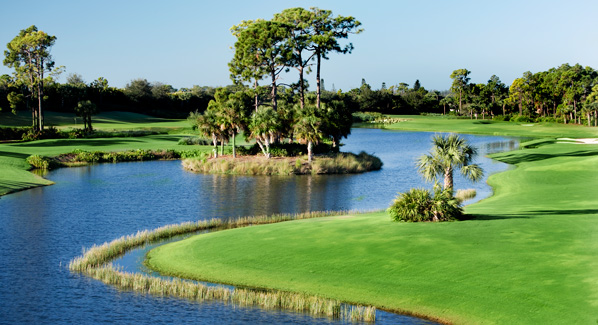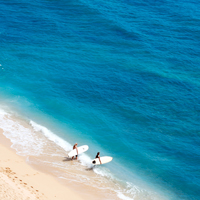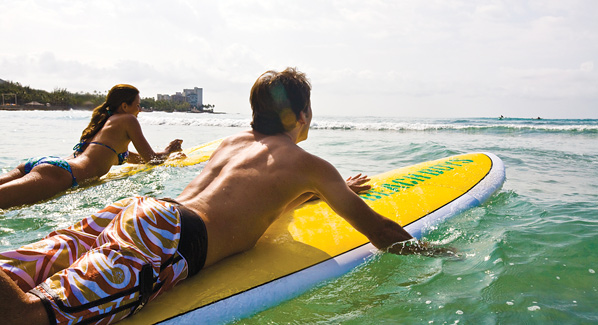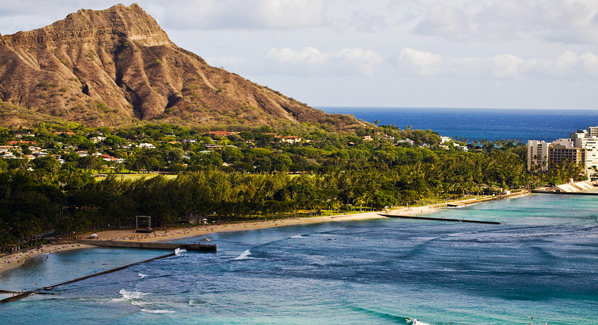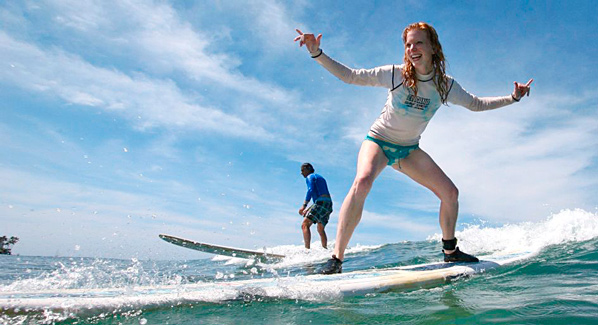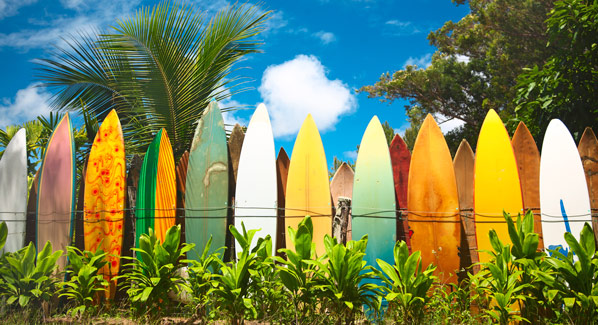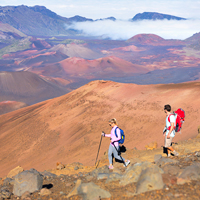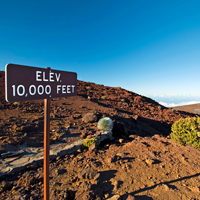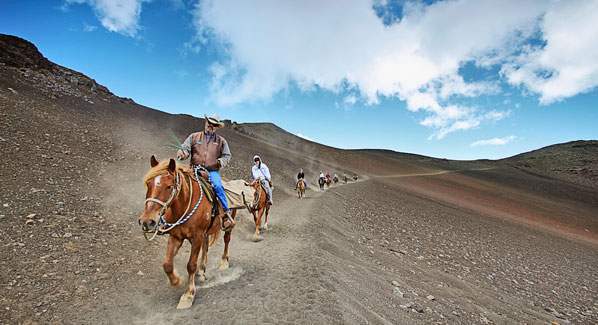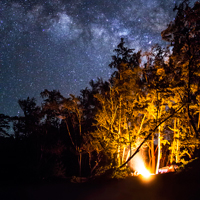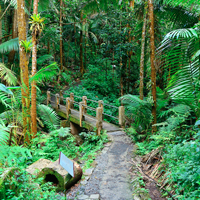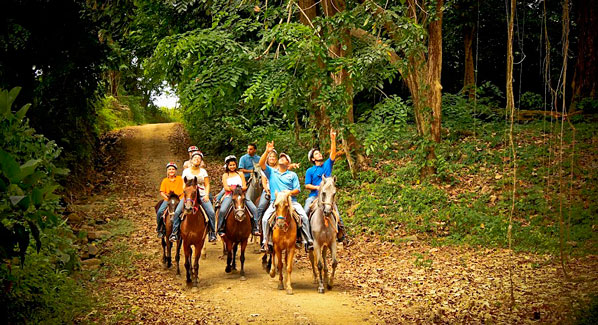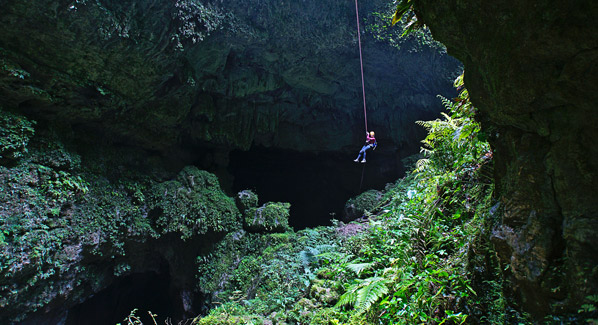When the sun sets over Key West, the flicker of street lamps turning on in the dusky light means one thing: It’s time to start the Duval Crawl. There’s never a shortage of bars, cocktails or colorful characters on Duval Street, which cuts through the western part of the island’s Old Town neighborhood, but it’s after dark that the crazy comes out in full force to kick off the party. By getting an early start, you can sample the island fun without going full tilt and also avoid the crowds while still taking in the sights, sounds and tastes of Duval Street’s must-stops. Or you can start your crawl well after dark when the party is in full swing and the rousing crowds overflow onto the sidewalk and road and the sounds of laughter compete with blaring music.

Key West’s Duval Street is where the nightly party known as the Duval Crawl takes place, with crowds moving from one bar to the next. Photo: Mike Cherim/iStock
When it’s time to head out, simply walk north to the 200 block. Every Duval Street experience must include a stop at Sloppy Joe’s, a Key West icon made famous by author Ernest Hemingway back in the 1930s. Photos of Papa line the walls, and local bands strum island tunes, light rock and jumpin’ jazz. Slip into the adjacent Joe’s Tap Room for a taste of craft beers on draft before heading one door down to the Lazy Gecko. This is your place for a frozen daiquiri or a Gecko Rum Punch, which really packs a wallop. Watch for people dressed in oddball getups, with anything from neon wigs to fuzzy animal-print hats perched on their heads in an attempt to attract attention.
Cross the street and stroll into the Hog’s Breath Saloon to blend with Key West locals, known as “Conchs.” This famous pub prides itself for pouring strong drinks. Slightly quieter than other nearby bars, it’s a good stop for grabbing some munchies like fish nuggets and conch fritters. For a taste of authentic Old Town, you have to stop at the Bull. Murals of old Key West line the walls in this open-air bar, and the balcony of the upstairs room, dubbed the Whistle Bar, is a prime spot for gazing down on the antics of Duval Street while enjoying a finely crafted margarita. The truly adventurous can head to the Garden of Eden, a rooftop bar, which, true to Key West’s anything-goes spirit, is clothing optional.
When you need to soak up the alcohol with a bite to eat, turn south, away from the increasingly celebratory crowd, and onto the 900 block for the delectable offerings at Nine One Five. The chic setting of a Victorian home and an upscale menu belie the restaurant’s relaxed vibe. Dine alfresco on the porch and share plates of beef carpaccio and lamb loin or dive into rich entrees like duck confit with butternut squash or seared scallops with pine nuts. For a taste of local seafood, Blackfin Bistro serves up adventurous versions of Key West favorites. Instead of conch fritters, they have conch cakes served with a house-made remoulade, and their pan-roasted grouper comes with couscous and Key lime avocado tartar sauce, a tasty way to ensure you’ll be walking back to your room rather than crawling with the late-night crowd.
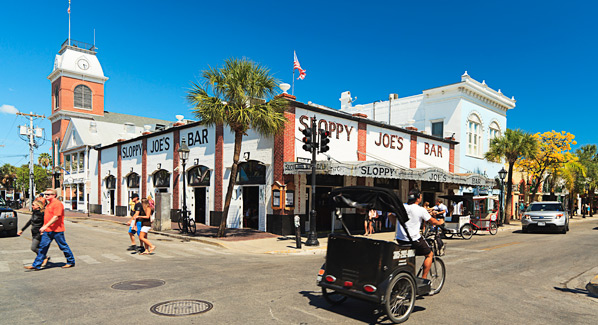
The action on Duval Street in Key West is non-stop, with daytime shoppers and strollers and nighttime partiers doing the Duval Crawl, the popular bar-hopping scene. Photo: Raul A. Rodriguez/iStock
Depending on how close you want to be to Duval Street, accommodations run the gamut. An ideal base for a quieter Duval Crawl experience is the Southernmost on the Beach Hotel, set on the calmer, southern end of Duval. Although you’ll have to walk a few blocks for party action, it’s steps from the sands of South Beach. Here you can watch palms sway in the breeze and the tranquil Atlantic water lapping up against the sand while sipping a mojito or Rum Runner at the Southernmost Beach Café, which is a relaxing way to start the evening.
If your style is more party hard and fall into bed, then choose a hotel in the heart of Old Town on the opposite end of Duval. The Westin Key West Resort & Marina sits on the waterfront, three short blocks from Duval Street and next door to Mallory Square, where crowds gather nightly to celebrate the sunset. From here you’ll be doing the Duval Crawl in just minutes. The Ocean Key House Resort & Spa, with the address 0 Duval St., is at the very northern end of Duval, tucked between the Key West Harbor and Mallory Square. Staying here, you can start or finish your night on the resort’s Sunset Pier with food, drink, music and dancing.

